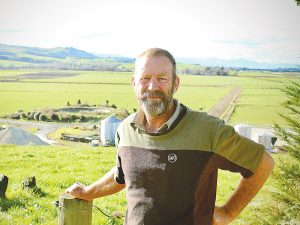Preparing for new freshwater plans
OPINION: With Freshwater Farm Plan (FWFP) regulations imminent, growers need practical, funded support now – not just more paperwork.
 Culverden farmer David Croft got his spreading equipment tested and calibrated by a Spreadmark accredited tester.
Culverden farmer David Croft got his spreading equipment tested and calibrated by a Spreadmark accredited tester.
With farmers now expected to produce Fresh Water Farm plans in addition to Farm Environment Plans, Culverden farmer David Croft decided to get his spreading equipment tested and calibrated by a Spreadmark accredited tester.
“We wanted to make sure we are spreading our nutrients correctly for our farm environment plan,” said Croft. “Also with the cost of fertiliser going up, it makes it quite a key area for us to save costs.”
Rather than a prohibitively complicated process, Croft said it was easy once he knew who to contact. Spread Test NZ’s Travis Churchill was the Canterbury contact, so organised the testing to be done on his farm. Other farmers also brought their machines to be tested at the same time. While they didn’t get Spreadmark certification they went through a similar process.
“We wanted to make sure we had our spreading width right,” said Croft. “Like any of these things there’s a costreward to it. We see it as an investment rather than an expense ($500 per spreader) because we get a payback on it. We also all learnt something from it.”
For Croft, the biggest lesson was that spinner speed is crucial.
“One of the farmers didn’t have a tachometer to check and it really upset his first pass with a horrible spread pattern. The spinners were too fast and were fracturing the urea.
“So it concentrated the product at the back of the spread and it didn’t fly as far.”
The calibration of the spreader between different product loads was also a key lesson, and because of different spreading patterns over the trays, Croft ended up altering his spreading width from 18 metres (urea) to 15 metres for NProtect.
Superphosphate was also an area of interest for Croft, who spreads his own.
“We do the one hectare soil samples and variable-rate phosphate applications, which is what got us interested in getting our spreader tested. Most people just do it for urea but we spread our own super too.”
Croft’s spreaders tested well but he queried the standard of the super, which showed to be too fine in the sieve box test. This required Croft to narrow up his spread pattern to 12 metres.
“I would highly recommend this to other farmers who are spreading their own product. As one of the biggest costs to farmers, we need to make sure we are getting bang for buck. We’d definitely do it again and currently plan to do it every two years.”
A Taranaki farmer and livestock agent who illegally swapped NAIT tags from cows infected with a bovine disease in an attempt to sell the cows has been fined $15,000.
Bill and Michelle Burgess had an eye-opening realisation when they produced the same with fewer cows.
It was love that first led Leah Prankerd to dairying. Decades later, it's her passion for the industry keeping her there, supporting, and inspiring farmers across the region.
Rangitikei Rivers Catchment Collective (RRCC) chairperson Roger Dalrymple says farmers in his region are taking a national lead in water quality awareness and monitoring.
One young couple is proving farm ownership is still within reach for young Kiwis.
Greenlea Premier Meats managing director Anthony (Tony) Egan says receiving the officer of the New Zealand Order of Merit (ONZM) honour has been humbling.
President Donald Trump’s decision to impose tariffs on imports into the US is doing good things for global trade, according…
Seen a giant cheese roll rolling along Southland’s roads?